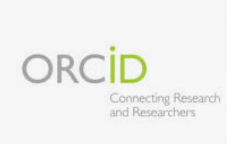A Fresh look at Carlos J. Finlay's Study on the Mosquito as a Vector of Yellow Fever
Keywords:
Carlos J Finlay, yellow fever, mosquito.Abstract
Introduction: The first record of the causal association between the Aedes aegypti mosquito and the transmission of yellow fever was the communication submitted by Carlos J. Finlay to the Havana Academy of Sciences in 1881. The Cuban scientist showed the results of inoculation, by infected mosquito bite, in five subjects from a group of 20 healthy people.
Objective: To revise the evidence through the use of statistical techniques not yet developed at the time of the Cuban scientist and to evaluate the strength of the causal evidence.
Methods: Results were analyzed using Fisher's exact test, Bayes factor, and risk difference, relative risk, and odds ratio of association. The strength of the evidence of the causal association was assessed using statistical criteria minding the most up-to-date causality criteria.
Results: Fisher's exact test was highly significant (p = 0.009), and the Bayes factor (24.9) was compatible with strong evidence in favor of the association between inoculation and disease development. The association was also supported by the risk difference (0.55; 95% CI: 0.15-0.96), the relative risk (18.7; 95% CI: 1.12-310.3), and the odds ratio (43.4; 95% CI: 1.68-1119.7).
Conclusions: Finlay's results were robust and adjusted to the causality criteria to explain the transmission of yellow fever by mosquitoes.
Downloads
References
-Finlay CJ. El mosquito hipotéticamente considerado como agente de transmisión de la fiebre amarilla. An Real Acad Cienc Médicas Físicas Nat Habana. 1882; XVIII: 147-69.
- Hill AB. The environment and disease: association or causation? Proc R Soc Med. 1965; 58(5):295-300.
- Howick J, Glasziou P, Aronson JK. The evolution of evidence hierarchies: what can Bradford Hill’s ‘guidelines for causation’ contribute? J R Soc Med. 2009; 102(5):186-94.
- Domínguez F. Carlos J. Finlay, su centenario (1933), su descubrimiento (1881), estado actual de su doctrina (1942). La Habana: Cultural SA; 1942. 380 p.
- López Sánchez J. Finlay. El hombre y la verdad científica. La Habana: Editorial Científico-Técnica; 1987. 578 p.
- Fricker RD, Rigdon SE. Yellow fever Discovering the cause and designing effective experiments. Significance[Internet]. 2020[acceso 18/1/2023]; 17(3):22-7. Disponible en: https://rss.onlinelibrary.wiley.com/doi/10.1111/1740-9713.01402
- Viechtbauer W. Conducting Meta-Analyses in R with the metafor Package. J Stat Softw[Internet]. 2010[acceso 18/1/2023].;36(3):1-48.Disponible en: http://www.jstatsoft.org/v36/i03/
- Beard E, Dienes Z, Muirhead C, West R. Using Bayes factors for testing hypotheses about intervention effectiveness in addictions research. Addiction[Internet].2016[acceso 18/1/2023];111(12):2230-47.Disponible en: https://pubmed.ncbi.nlm.nih.gov/27347846/
- Jeffreys H. Theory of probability. London: Oxford University Press; 1948.
-Fisher R. Statistical methods for research workers. New York: Hafner Publishing Company; 1925.
- Poole C. On the Origin of Risk Relativism. Epidemiology. [Internet]. 2010[acceso 18/1/2023];21(1):3-9.Disponible en: https://pubmed.ncbi.nlm.nih.gov/20010205/
Downloads
Published
How to Cite
Issue
Section
License
La Revista Cubana de Higiene y Epidemiologia protege los derechos de autor, y opera con una Licencia Creative Commons 4.0.(Licencia Creative Commons Atribución-No Comercial 4.0 Internacional (CC BY-NC 4.0).Al publicar en ella los autores permiten copiar y redistribuir el material en cualquier medio o formato; remezclar, transformar y crear a partir del material. Debe reconocer adecuadamente la autoría, proporcionar un enlace a la licencia http://creativecommons.org/licenses/by-nc/4.0/ e indicar si se han realizado cambios. No puede utilizar el material para una finalidad comercial. No hay restricciones adicionales.
Los autores autorizan la publicación de sus escritos conservando los derechos de autoría, y cediendo y transfiriendo a la revista todos los derechos protegidos por las leyes de propiedad intelectual que rigen en Cuba, que implican la edición para difundir la obra.
Los autores podrán establecer acuerdos adicionales para la distribución no exclusiva de la versión de la obra publicada en la revista (por ejemplo, situarla en un repositorio institucional o publicarla en un libro), con el reconocimiento de haber sido publicada primero en esta revista.




